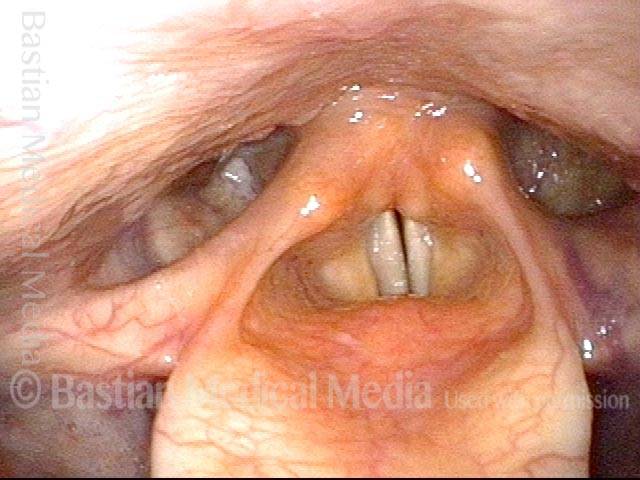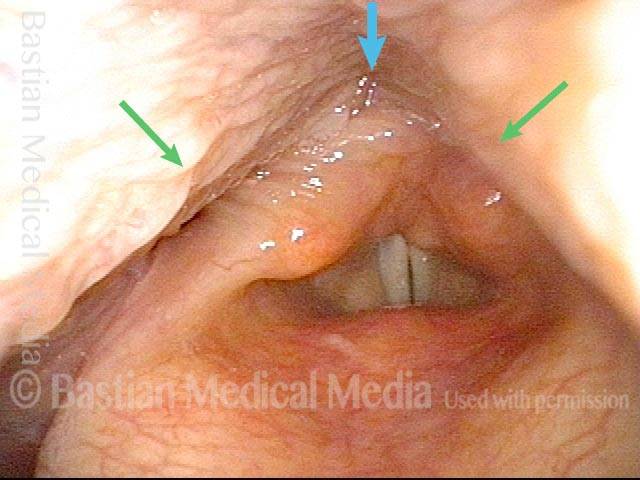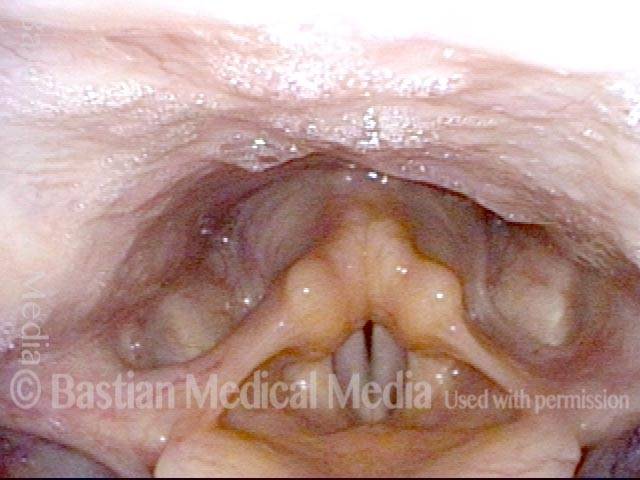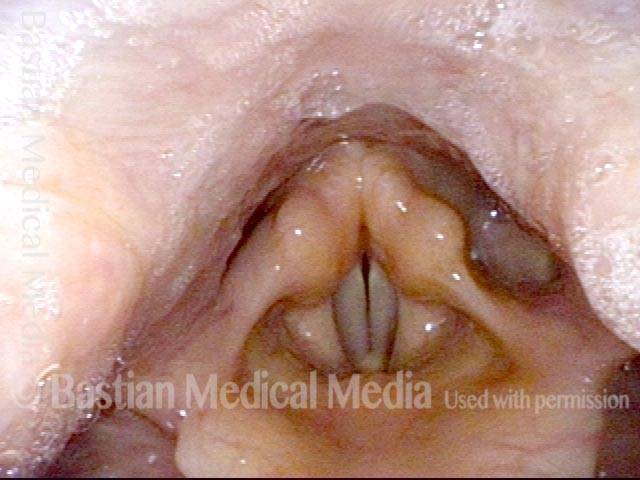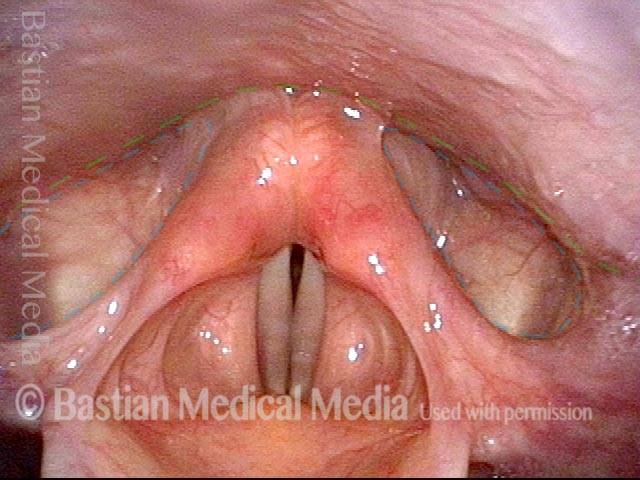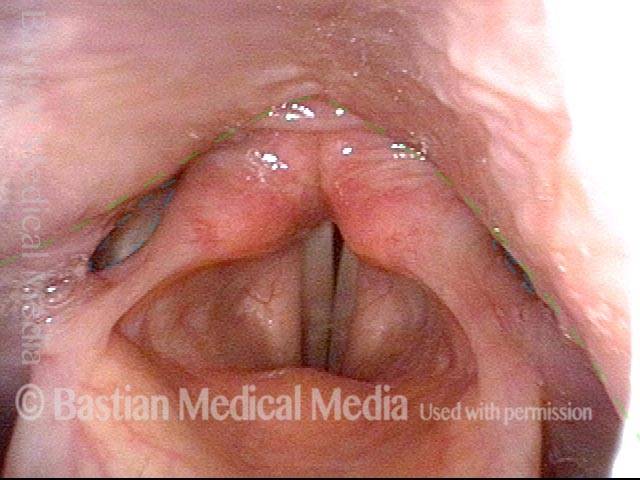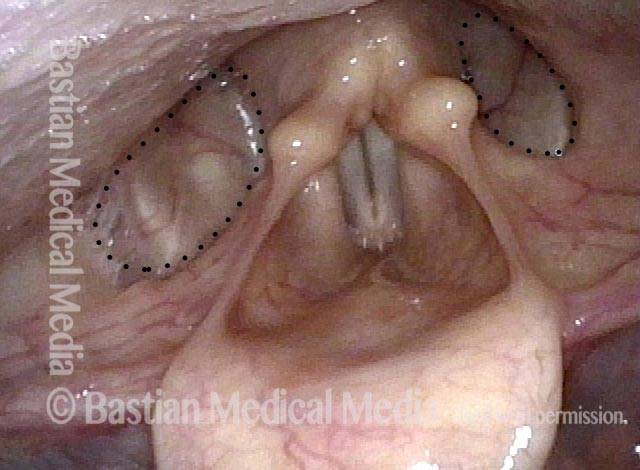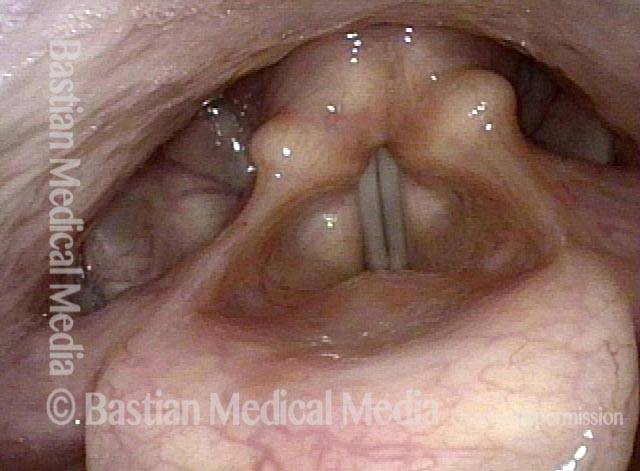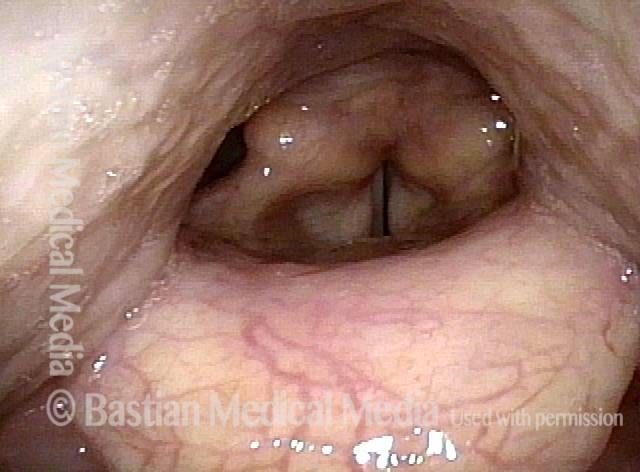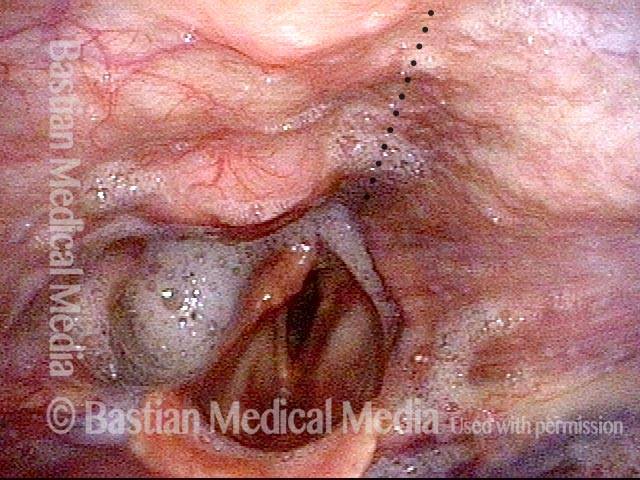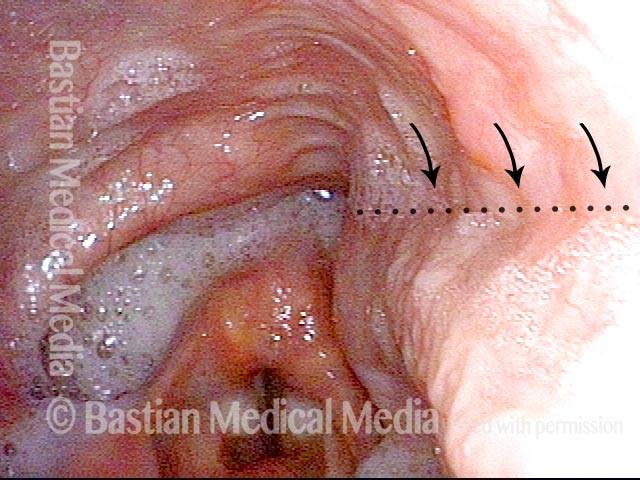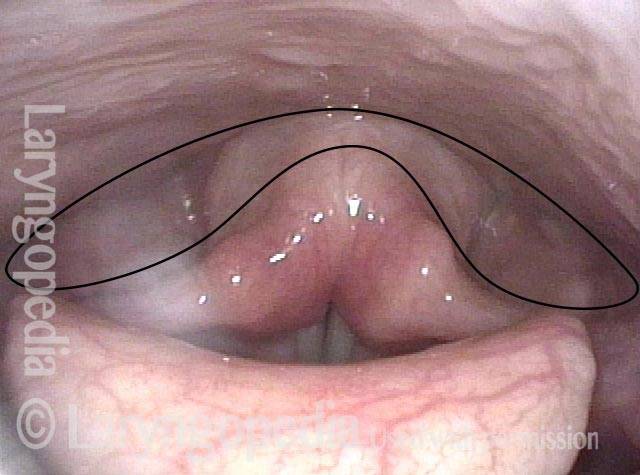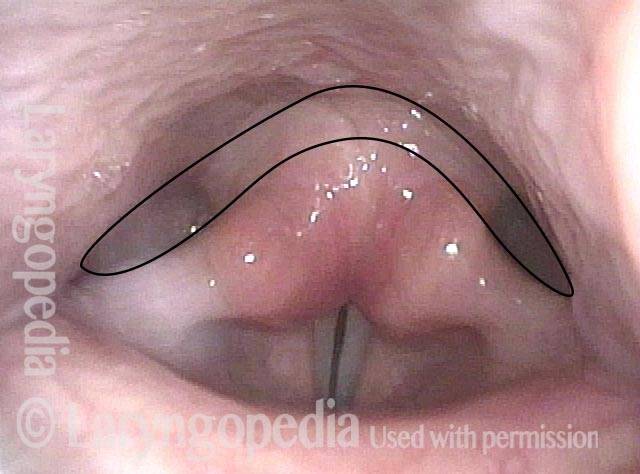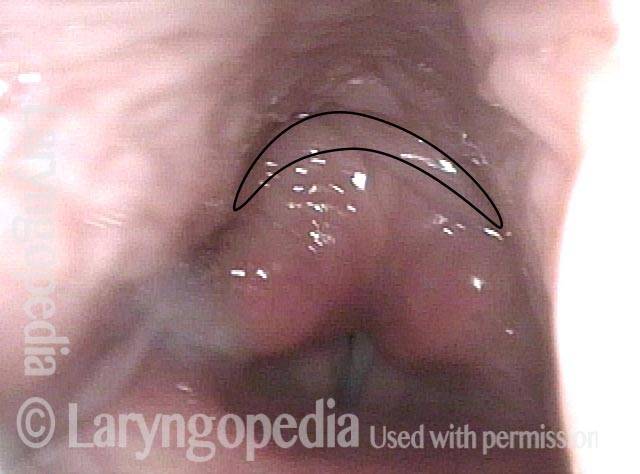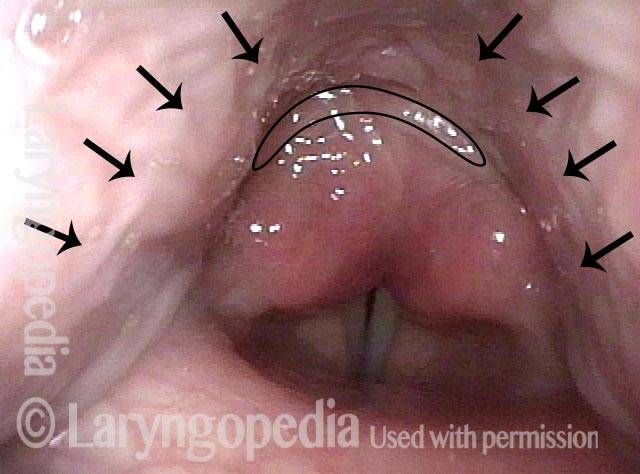Contraction of the pharyngeal constrictor muscles that surround the throat. Or, the “pharyngeal squeeze.” It is the primarily the middle and inferior constrictor muscles that contract. When these muscles contract, they tense and narrow the pharynx. This action is particularly important for swallowing.
The pharynx also contracts when a person produces voice above a certain pitch in his or her range. The threshold for pharynx contraction depends in part on a person’s sex and age, and in women with peri-menopausal voice change (a condition in which they lose some capability and comfort in their upper vocal range), the pharynx will contract at a much lower pitch than otherwise expected. Thus, a clinician trying to diagnose peri-menopausal voice change can endoscopically view a patient’s pharynx and elicit different vocal tasks to see if the voice’s “muscular ceiling”—where the pharynx begins to contract—has lowered or not.
